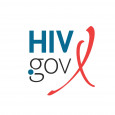During the recent Biomedical HIV Prevention Summit, hosted by NMAC, in Seattle, Washington, the HIV.gov team spoke with leaders in the HIV field who gathered to discuss the data, research, and science surrounding efforts to end the HIV epidemic. HIV.gov’s Director, Miguel Gomez, spoke with Harold Phillips, the Deputy Director of Programs for NMAC, about two plenary sessions Harold helped coordinate and facilitate, as well as the key takeaways from the sessions. Watch their conversation here.
In the video, Harold shared that the first plenary included leaders in the HIV prevention and treatment field who discussed ways to accelerate access to pre-exposure prophylaxis (PrEP) for communities of color. Harold noted the importance of this topic for these specific communities.
Expanding Access to PrEP
One of the goals of the Summit was to highlight PrEP campaigns across the country. To this end, the second plenary, as Harold noted, focused on implementation science “and all of the work being done by our federal agencies [regarding] the best ways to provide access to PrEP.” He continued by noting that the second plenary also focused on the role of the community in PrEP access research and “how we take that research and scale it up to help us accelerate getting toward the end and achieving our goals.” Watch the video to hear Harold talk about key takeaways he’d be interested in sharing with the HIV service community about the community’s role regarding PrEP.
Expanding the Response to PrEP
As he acknowledged NMAC’s long history of supporting the community-based response to HIV across the country, Miguel asked Harold to detail two or three things that he would like to see in the community to expand the response to PrEP. Harold expressed that he’d like to see “a continued outreach to Black women and gay men of color [regarding] PrEP [because] there’s still a lack of awareness in our communities; […] the role of [doxycycline post-exposure prophylaxis] Doxy-PEP in treating sexually transmitted infections, and using that as an opportunity to have conversations about PrEP; […] and thinking outside of the box [to determine] where are those places and spaces that we need to have conversations about PrEP and PEP that are outside of the clinics.” In addition to the role of the community in expanding access to PrEP, Miguel and Harold also discussed the element of storytelling during the plenaries and how this tool helped the plenary’s speakers connect with the Summit’s attendees.
Harold shared that several of the presenters during the plenary used the art of storytelling to “convey their path and their journey in this work, as well as their connection to this work, and [they] used it in a way to connect with the audience.” Miguel concluded the conversation by sharing a personal reflection about the plenary saying, “It was beautiful to watch the audience [as they heard] from individuals from across the country [who were] telling their stories [about] why PrEP and increasing our HIV response is necessary.”
Stay tuned to HIV.gov as we share more about the Biomedical HIV Prevention Summit. Also, be sure to check out the full conversation with Harold and Miguel here.
This blog post was published May 7, 2024, on HIV.gov.








Comments
Comments